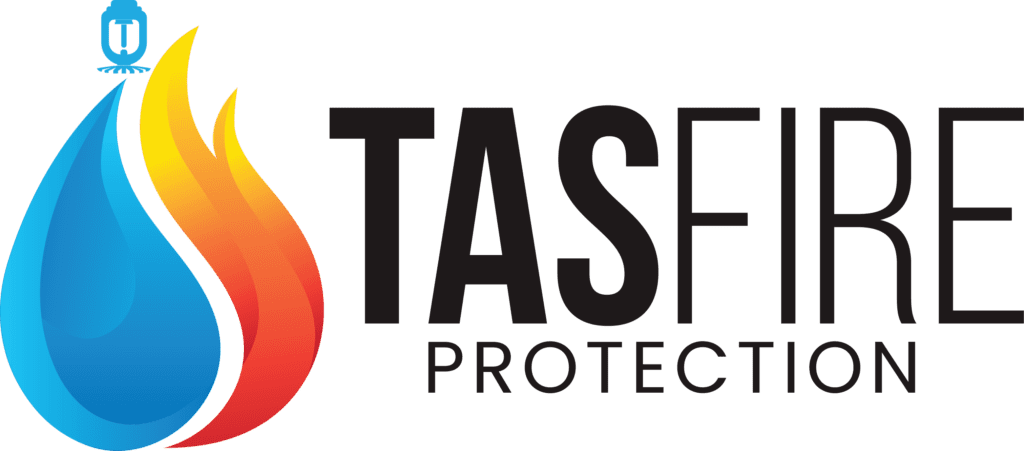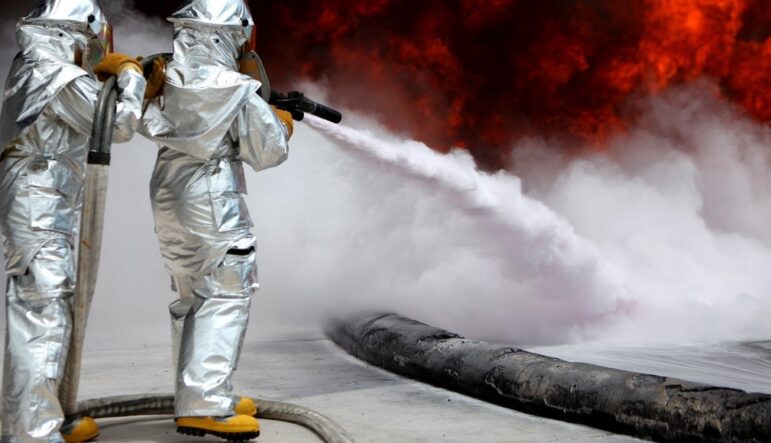The Ultimate Guide: Types of Fire Extinguishers…
Although fire has been immensely useful for humans, it also poses a great threat to life when it gets out of control. Heat, oxygen, and fuel are the three requirements for a fire, and fire extinguishers remove one or more of those three requirements. A burning fire will be extinguished if any one of these elements is removed. Thus, fire extinguishers are included in one of many health and safety regulations to keep everyone safe.
Fire extinguishers come in different types, and it is important to know what to use and when. There are five kinds of fire extinguisher types: wet chemical, CO2, dry powder, foam, and water.
A wide variety of fuels are likely to start a fire, which calls for different types of fire extinguishers. As a result, fires caused by different types of fuel are classified into different fire classes. Depending on the nature of the fire hazard that has been identified at your premises, it is necessary to install certain types of fire extinguishers. Some common classifications of fires are Class A (ordinary combustibles such as fabric, wood, paper, and other flammable solids), Class B (flammable liquids like solvents, gasoline, paint, turpentine, and grease), Class C (flammable gases such as butane, hydrogen, and methane), Class D (combustible metals such as potassium, magnesium, sodium, and titanium), Class E (live electrical equipment), and Class K/F (combustible cooking oils and fats usually found in a commercial kitchen).
Even though fire extinguishers are essential safety equipment for the workplace and home, not all of them are created equal. Choosing the right one requires understanding how each works. So let’s discuss different fire extinguisher types and their characteristics. This blog can act as the ultimate guide to your fire extinguisher.
Fire Extinguisher Types:
Water
Water fire extinguishers are one of the most commonly used extinguishers for Class A fire risks. There is a red label on every water extinguisher. They are made primarily of water, although they sometimes contain other additives like antifreeze agents. Sometimes water fire extinguishers will also contain wetting agents that can help make them more effective against fire. Since it is mainly used for Class A fires, it can be used to extinguish fires caused by combustible solids like fabrics, wood, paper, etc. Water-type fire extinguishers must be placed near exits on floors where Class A fire risks have been identified.
There are two types of water-type fire extinguishers:
-
- The water spray type has a spray nozzle instead of a jet nozzle, which allows for water to cover a larger surface area faster in order to extinguish fires more rapidly.
- Water mist type extinguisher releases microscopic water particles with a different type of nozzle. Microparticles released by the extinguisher nozzle suffocate the fire and also reduce the heat by forming a wall of mist that covers the person using the extinguisher.
Since these extinguishers primarily contain water, they are not suitable for use in freezing temperatures unless an anti-freezing agent is added to them. The excellent electrical conductivity of water makes it unsuitable for electrical fires, and using it in such conditions might cause death by electrocution. Furthermore, it is not suitable for fires caused by liquids like oil or grease, because they float on water and continue burning.
Foam
Class A and Class B fires can be extinguished by using a foam-type fire extinguisher. Cream labels are found on foam extinguishers. Even though they are water-based, they discharge foam materials instead of liquid or powder. This foam creates a barrier between the fuel and the flame, thus cooling it down and depriving it of oxygen. The foam floats on a liquid’s surface, which makes it suitable for fires caused by flammable liquids like petroleum, solvents, alcohol, and flammable gases, unlike water fire extinguishers. This makes foam fire extinguishers the best choice for outfitting kitchens, where most of the fires have oil or grease as a fuel source. Also, on floors that may present a fire risk for class A or class B, this type of fire extinguisher should be installed near the exits.
They are not suitable for use in frigid temperatures because they will freeze in such temperatures. The water-based formula also makes them dangerous to use in fires that involve live electrical equipment. Fires involving free-flowing liquids cannot be contained by these products. Using this type of fire extinguisher is not recommended for fires caused by flammable metals or for kitchen fires.
You may also like to read:
CO2
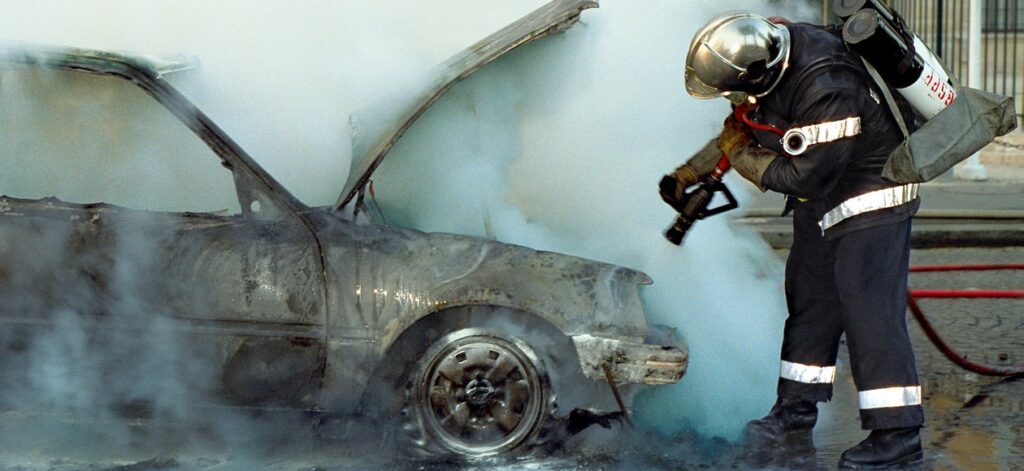
In fire situations involving delicate items or costly electronic equipment, it will be important to use an extinguisher that doesn’t cause any water damage to those items. So, a carbon dioxide (CO2) fire extinguisher is most appropriate for places where there are electrical components so that it doesn’t leave any residue after the process. Firefighters can also use them on Class B fires, which involve flammable liquids like petrol or paraffin. Carbon Dioxide Extinguishers (CO2) has a black label. It is a gas-based fire extinguisher that works by reducing the oxygen levels around the fire.
The CO2-type fire extinguishers are not suitable for use in outdoor or indoor locations where the wind flow is high enough to dissipate the carbon dioxide rapidly. Due to the relatively short range of effectiveness of this extinguisher, it is only recommended to be used for Class B and Class C fires. In confined spaces, the concentration required for fire extinguishment can reduce oxygen to a dangerously low level. Thus, it should be used with caution.
Dry Powder Types
Dry powder, or ABC powder, fire extinguishers are effective against Class A, Class B, and Class C fires. Dry powder extinguishers have a blue label. As the name suggests, they use a special powder that melts into a sticky molten substance when subjected to a temperature above a certain limit. This molten substance then interrupts the chemical reaction that caused the fire. Solids are propelled out of extinguishers by gases like nitrogen, which gives them a range of about 15 feet. They basically work by separating the fuel from the fire in the combustion process or by removing the heating agent present in the fire. This kind of fire extinguisher is required in places such as garages, welding and flame cutting industries, and buildings with large boiler rooms where flammable gases are used in chemical processes.
The downside of using a dry powder fire extinguisher is that it leaves a huge, messy residue. Due to the powdery nature of this extinguisher, it is not advised to be used inside an enclosed space because the risk of inhalation is involved. These types of fire extinguishers are not an ideal option for fire hazards caused by an electronic malfunction or any accident involving cooking oil.
Wet Chemical Types
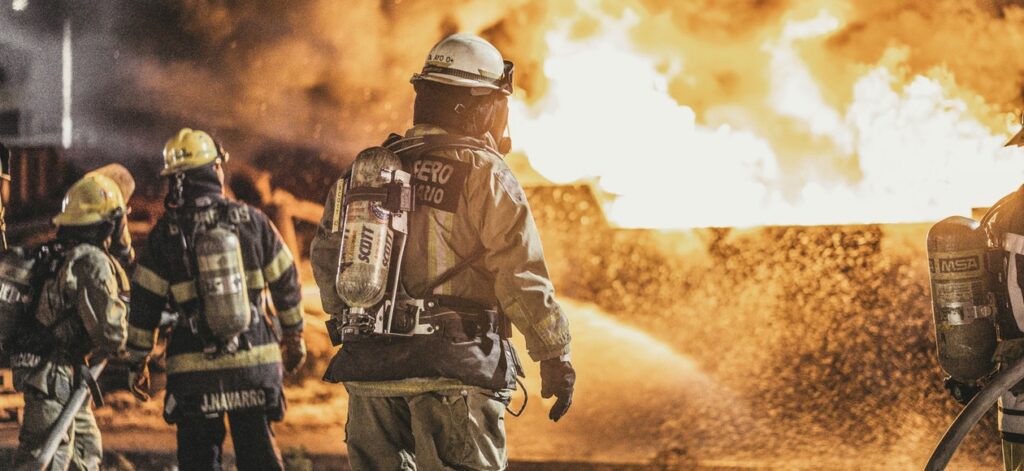
When it comes to Class K/F fires that involve cooking oils and fats, the appropriate fire extinguisher type you can use is a wet chemical extinguisher. Yellow labels are found on wet chemical extinguishers. Even though they can be used for class A fires, this category of fire is extinguished by foam or water extinguishers as it involves a higher risk rate. Most of the wet chemical fire extinguishers have a pH value of 9.0. In a class A fire hazard, this fire extinguisher type acts as a cooling agent. In cooking oil fire accidents, these can act as a foam blanket, which will prevent further ignition of the element. So what the wet chemical type does is reduce the temperature of the cooking oil below the ignition point of the substance with the help of the water cooling agent present. When this is applied to the affected area in the form of a spray, it reduces the possibility of any kind of splashing of the dangerous element, keeping the person who is using it safe. Commercial kitchens and canteens need to provide this type of fire extinguisher close to the fire risk.
While you are choosing the fire extinguishers for your property, there are a few things you should take into consideration. Any single fire extinguisher type might not be effective for the hazard caused. So it is inevitable to study the space where a fire risk can be identified and the nature of the fire. Choosing the wrong type of fire extinguisher can turn out dangerous as it could increase the fire damage more and risk the individual who is putting out the fire. A vital part of assessing the space where you are keeping the fire extinguisher is whether it is an outdoor or indoor space. This makes a lot of difference because there are a lot of fuel or chemical components involved in the fire extinguisher system that could act differently in different environments. So always make sure you have done your research to save you and the people around you if any kind of fire risk is identified on your property.
TAS Fire Protection is a leading fire protection company in Canada that provides professional fire extinguisher inspection and fire installation services for commercial, industrial, and residential properties. TAS Fire Protection has become the go-to provider for reliable and quality fire protection services in Canada. Their team of experienced professionals is committed to providing top-notch customer service and ensuring that your property is safe from potential fires. They provide a full range of services from inspections to installations so that you can be sure your property is protected at all times.
Contact Us (905-870-7779) for a Free Consultation!
—
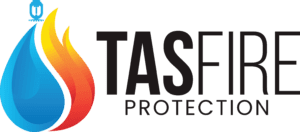
About TAS Fire Protection
TAS Fire Protection offers comprehensive and cutting-edge fire protection and security services to commercial, industrial, and high-rise properties. Our team of highly skilled professionals has years of experience in installing, maintaining, and inspecting fire alarm systems, fire sprinkler systems, fire extinguishers, fire hydrants, security alarm systems, and more. We understand that fire safety and security is essential to the protection of lives and property.
> Learn More
